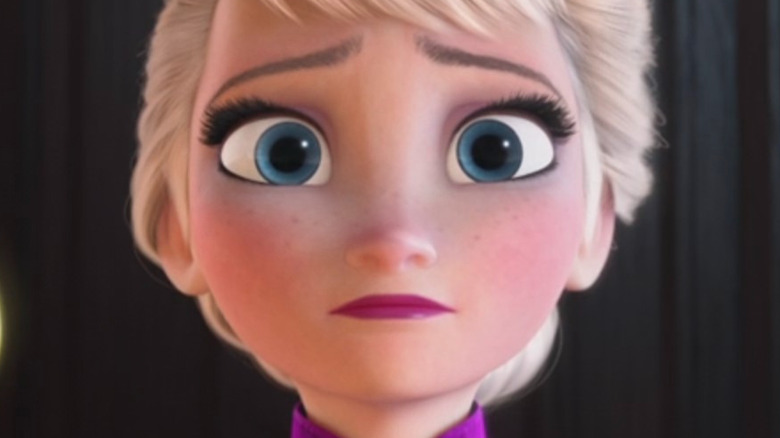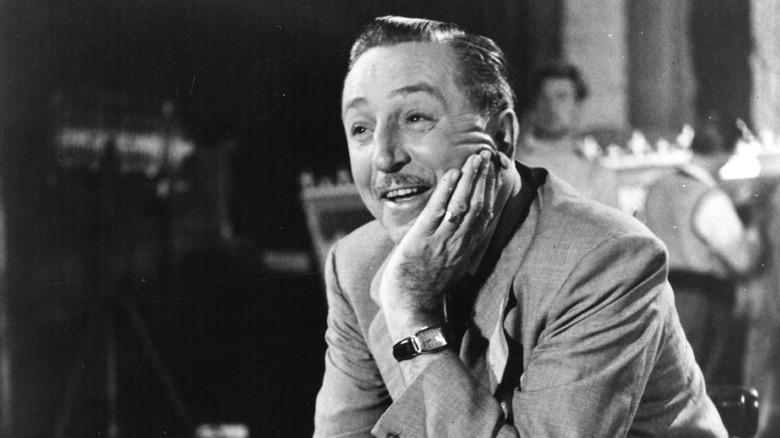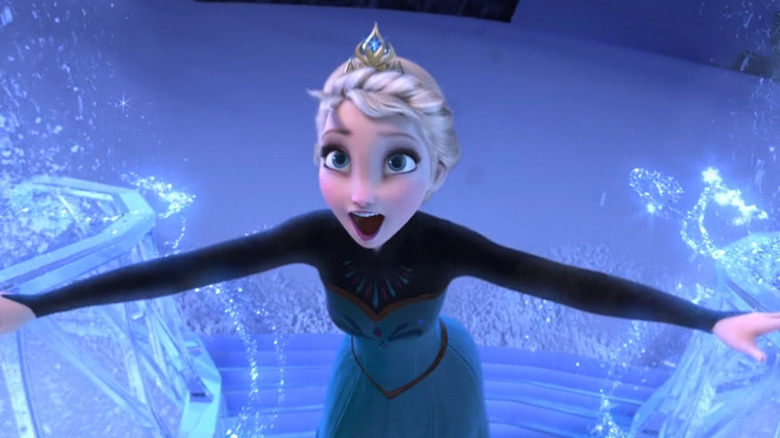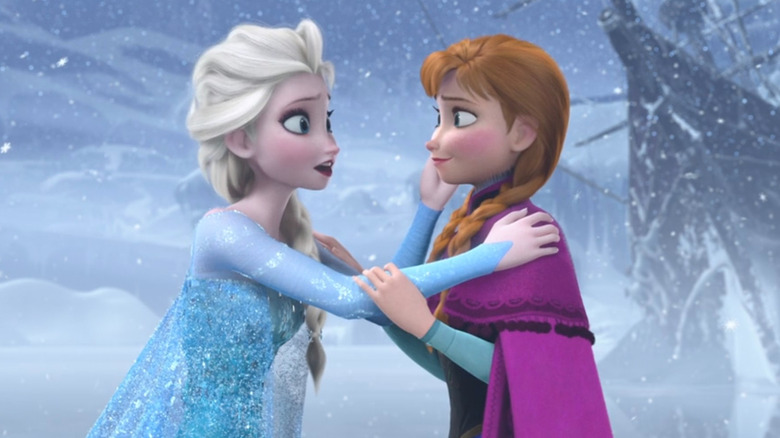Why It Took Disney 70 Years To Bring Frozen To The Big Screen
It's hard to think of a Disney film in recent years that has had quite the impact as their 2013 hit "Frozen." A loose adaptation of the Hans Christian Andersen story "The Snow Queen," the film tells the story of a princess who goes on a journey to help her sister, whose ice powers have engulfed their kingdom in an eternal winter. With its colorful cast of characters, heartwarming story of sisterhood, and rip-roaring collection of songs, "Frozen" became more than another hit — it was a phenomenon. At the time of its release, "Frozen" shattered records, becoming the highest-grossing animated film of all time (via The Hollywood Reporter) and winning Walt Disney Animation Studios' first Oscar for best animated feature, alongside an additional Academy Award for the hit song, "Let It Go" (via IMDb). Since then, the film has expanded to become one of Disney's most successful franchises, spawning a 2019 sequel (that outgrossed its predecessor), numerous theme park attractions, a Broadway musical, merchandise, video games, and more.
With the overwhelming success that "Frozen" has spawned, it's crazy to think that getting the film to the big screen was as arduous a task as it was. But indeed, the film's gestation period of over half a century saw it go through many false starts, dating all the way back to the days of Walt Disney. So how did Disney build this snowman into the global phenomenon we know it as today?
Why Walt Disney originally let it go
The project's origins date back to the early 1940s, when Walt Disney, fresh off the success of "Snow White and the Seven Dwarfs," continued to look for ideas to cultivate into animated features. Disney's original idea was to collaborate with film producer Samuel Goldwyn to craft a biography of author Hans Christian Andersen (via Jim Hill Media). The original vision contained a combination of animated and live-action sequences, where Andersen's life would be seen in live-action, and his stories would be brought to life through Disney's lush animation. The project stumbled in trying to adapt "The Snow Queen" to the silver screen. The titular character proved especially hard to bring to life convincingly, as the filmmakers found her to be far too one-note of a character to make audiences feel attached.
As a result of this, as well as the stresses World War II was putting on the studio, Disney and company turned their attention to crafting war propaganda cartoon shorts and package films for the remainder of the decade. Goldwyn eventually created a fully live-action version of the idea in 1952 (although if you want to see an animated/live-action version of this idea, check out Jules Bass and Arthur Rankin' criminally overlooked "The Daydreamer"). Walt himself passed in 1966, seemingly taking "The Snow Queen" concept with him. But as we all know, that's far from the end of this story.
How it became a fixer upper
While there were sporadic ideas to turn "The Snow Queen" into a theme park attraction during the 1970s (via Yahoo News), the concept went back into becoming an animated feature during the late 1990s and early 2000s, following Disney's Renaissance period that saw great success with other animated hits such as a similar Hans Christian Andersen adaptation, "The Little Mermaid." "The Snow Queen" entered a tumultuous development process that saw top Disney artists such as Glen Keane ("The Little Mermaid," "Beauty and the Beast") and the Brizzi brothers ("The Hunchback of Notre Dame") tackle the project but continue to run into dead ends (via Jim Hill Media).
It wouldn't be until years later that "Tarzan" co-director Chris Buck, who was fresh off of directing the Sony Pictures Animation film "Surf's Up," became attached to the project (via Den of Geek). When discussing his early ideas for the film with Yahoo, Buck says, "An early idea I pitched was to do something different on the definition of true love. Disney had already done the 'kissed by a prince' thing, so thought it was time for something new. The idea really sparked with a lot of us, like John (Lasseter) and Ed (Catmull)." However, things still weren't fully in place yet, as Buck would also state, "The idea of the protagonists actually came later on in development." To finally connect those remaining pieces of the puzzle, another crucial voice would need to come on board.
The final piece that made the story work
While still working on the 2012 film "Wreck-It Ralph," screenwriter Jennifer Lee assisted Chris Buck and the "Frozen" team with story meetings. After some time, it became clear that she had a great passion for the project. "Chris and I really worked well together," she said (via Den of Geek). "I think John and Ed Catmull just saw something in Chris and I together, and it was after one of our screenings — a little earlier than when it was announced, I think it was in August — but they just told me. Chris and I were relieved though, it just seemed like the right fit."
With Lee on board, who was the first-ever woman to direct a Disney animated film, the team — along with songwriters Bobby and Kristen Anderson-Lopez — made major changes to the film that helped shape it into the film we know today. The biggest changes in fleshing out the Snow Queen character were giving her a sister, Anna, and the creation of the song "Let It Go," which reshaped the entirety of her character and motivation. Now with a more fleshed-out world and complex driving force behind the film, the movie found new life. It was crafted over the course of a year and released in November 2013 (via Bennet).
The journey to "Frozen" was far from an easy one, but it goes to show that Disney's dedication to finding a great story is of utmost importance, no matter what time period. As Chris Buck says in an interview with HeyUGuys, "I'm hoping that Walt would be proud of what we did."



